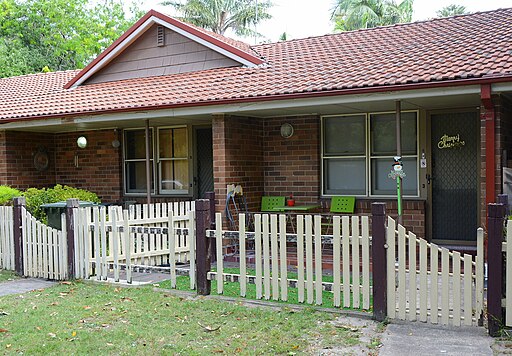
The National Agreement on Social Housing and Homelessness kicks in this week, and is set to run for five years. This is the latest in a long line of periodically renegotiated compacts between federal and state governments, continually in force since 1945. For most of this period the deal was known as the Commonwealth-State Housing Agreement (CSHA) although more recently as the National Housing and Homelessness Agreement (NHHA).
The NASHH serves primarily as a funding commitment by the federal government to contribute to state/territory social housing and homelessness services. This latest Agreement sees the Commonwealth pledging $1.8 billion in 2024-25 to be divided between the jurisdictions pro rata to population. As in previous years, future amounts will be up-rated annually for inflation.
For a state like NSW, assured annual funding of $540 million is a useful contribution to these costs. For context, though, according to the latest Report on Government Services, NSW Government 2022-23 expenditure on social housing and homelessness totalled $2.6 billion. Also bear in mind that, according to a 2017 government report, the NSW public housing system was, even at that time, carrying an annual funding deficit of $950 million. And that, since the federal government’s financial firepower is vastly greater than that of states and territories, there’s a strong argument that it should be the prime funder of social housing – an integral element of the welfare state.
State/territory obligations
In return for NASHH funding, each state and territory government signs up to a range of accountability and policy commitments; specifically:
- The development of a jurisdiction-specific housing and homelessness strategy
- Annual performance and financial reporting on housing and homelessness activities
- Participation in data improvement projects.
Consistent with the 2022 National Housing Accord that commits Australian governments to enabling boosted housebuilding, a jurisdiction’s NASHH-compliant strategy must:
‘[indicate] the level of housing supply needed to respond to projected housing demand, and [outline] the reforms and initiatives that will contribute to meeting this need’.
Regrettably, though, there is no requirement to quantify unmet need for social housing.
A new feature of the NASHH that extends beyond the predecessor NHHA, and highlighted by Hon Prof Vivienne Milligan as potentially significant, is its attempt, to craft governance arrangements linking social housing and homelessness assistance for First Nations people to Closing the Gap reform priorities and mechanisms.
Data improvement priorities
Among the data improvement priorities specified in the Agreement are several of particular note.
Firstly, there is a pledge to ‘establish a research data set for the Social Housing sector, similar to the SHSC’. This refers to the AIHW’s Specialist Homelessness Services Collection, a case return system that generates detailed information about the demographic characteristics, housing circumstances and needs of homelessness service users, together with the forms of assistance provided. We might expect (hope) that a social housing dataset ‘similar to the SHSC’ might provide greatly enhanced information on the cohort of people applying for and receiving social tenancies.
Secondly, there is a declared intent to ‘investigate the feasibility of producing more frequent [than 5-yearly] estimates of homelessness based on administrative data’. Considering Australia’s current reliance on the five yearly census as the main source of homelessness statistics, figures which are usually published around 18 months after the relevant fieldwork, this could be an extremely welcome development. Whether this initiative might involve a broadly scoped definition of ‘homelessness’ as in the census, or a narrowly targeted focus on rough sleeping, as in the NSW Government’s annual state-wide street counts ongoing since 2020, is unclear.
Thirdly, and potentially most significantly, the NASHH includes a pledge to ‘investigate the feasibility of a national survey of social housing stock condition’. While funding constraints have forced state and territory governments to economise on public housing maintenance and modernisation for decades, there is little publicly available data on the accumulated impacts of this history.
Australia’s increasingly inadequate quantity of social housing is rightly a key subject of policy and media debate, and the absence of official estimates on unmet need is inexcusable. But opening up the books on the deficient quality of the portfolio – e.g. on energy performance – is equally essential. Without such data, the Commonwealth Government’s promised National Housing and Homelessness Plan will be a toothless tiger, just like the state/territory strategies prescribed by the new Agreement.

No Comments so far ↓
There are no comments yet...Kick things off by filling out the form below.